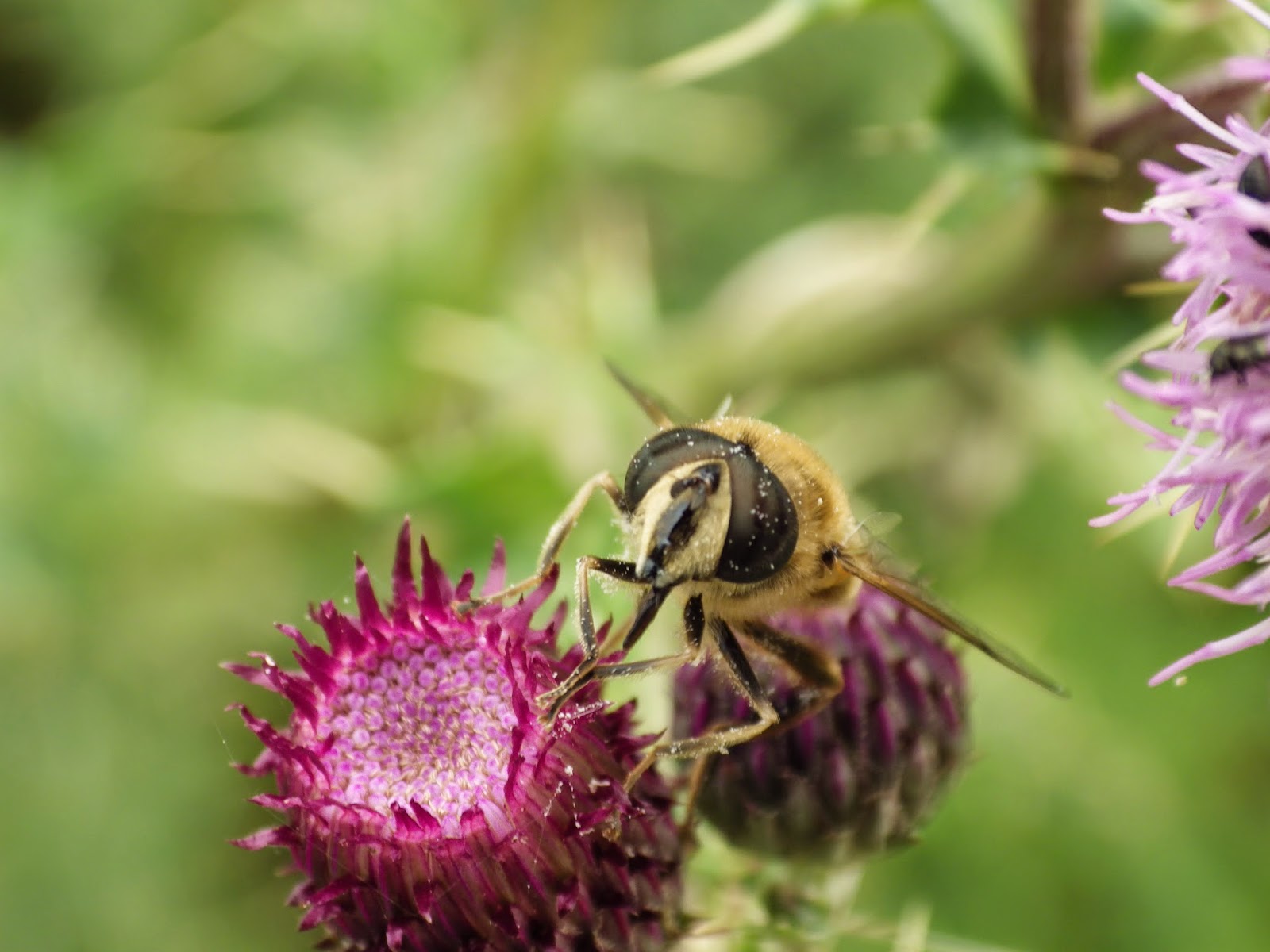Why is it that some of the very best plants are also some of the very worst plants?
I'm talking nettles and thistles. The good side: not actually bad looking plants, wonderful for wildlife, useful as a barrier. The bad side: rampant and uncontrollable.
I'll deal with the thistles for the moment, creeping thistle in the main. It produces fluffy seedheads by the million. If they find a footing, they shoot their roots deep into the ground and in no time fleshy roots are spreading deep underground, sending up battalions of prickly shoots. Pulling them is tedious and disheartening, not to mention the inevitability of discovering some time later that microscopic pieces of thorn are lodged just under your skin.
But on the good side, there's this:
Thistle flowers are an absolute magnet for insects. These photos took me less than 10 minutes to take and it wasn't even a sunny day.
If only there was a way to control the thistles, to grow them where I want and only where I want.
The old saying goes -
Cut them in June
You've cut too soon,
Cut them in July,
They're sure to die.
Now, I may not be able to constantly keep the thistles cut, but I am hoping that I have put together a team who can. They need a little help at first, for which I use a hand sickle to swipe down the plants, but after that they come along and devour the wilting leaves. They gradually nibble the fresh young leaves too and I'm hoping this will be enough to do the trick over time.
Here is my team.
If my Shetland sheep attack the thistles with the same gusto that they nibble at my trees, in no time the thistles should only be growing where I choose.
They like nettles too.















No comments:
Post a Comment
Please leave a comment, I love to read them. I've been having a little trouble with not getting notifications, but think I've sorted it out now so I'll do my best to answer!